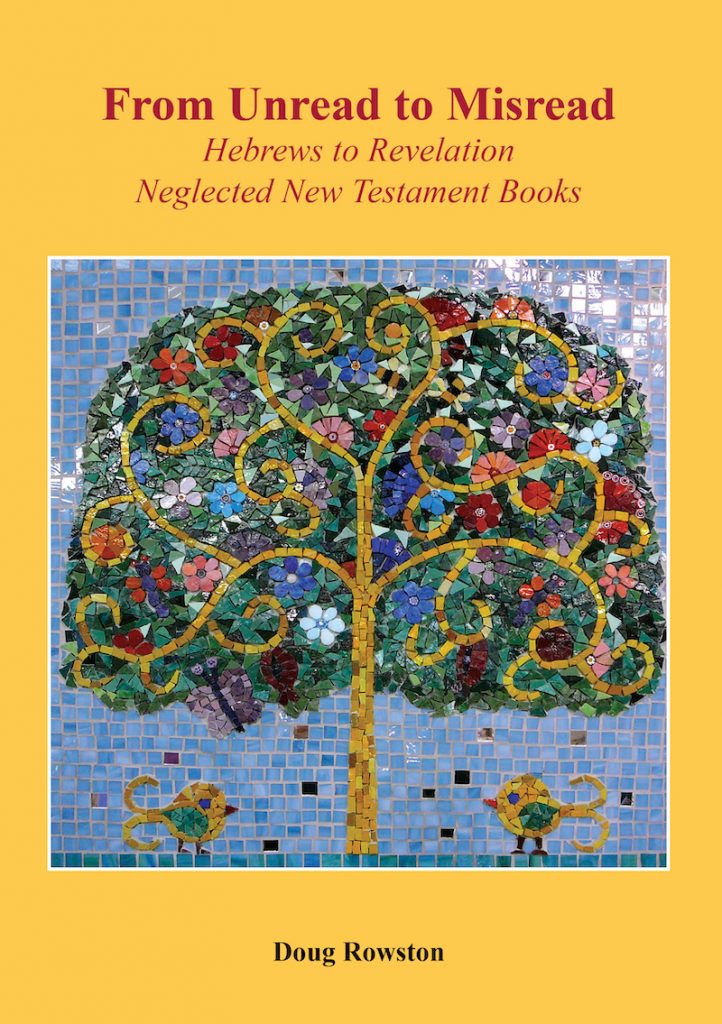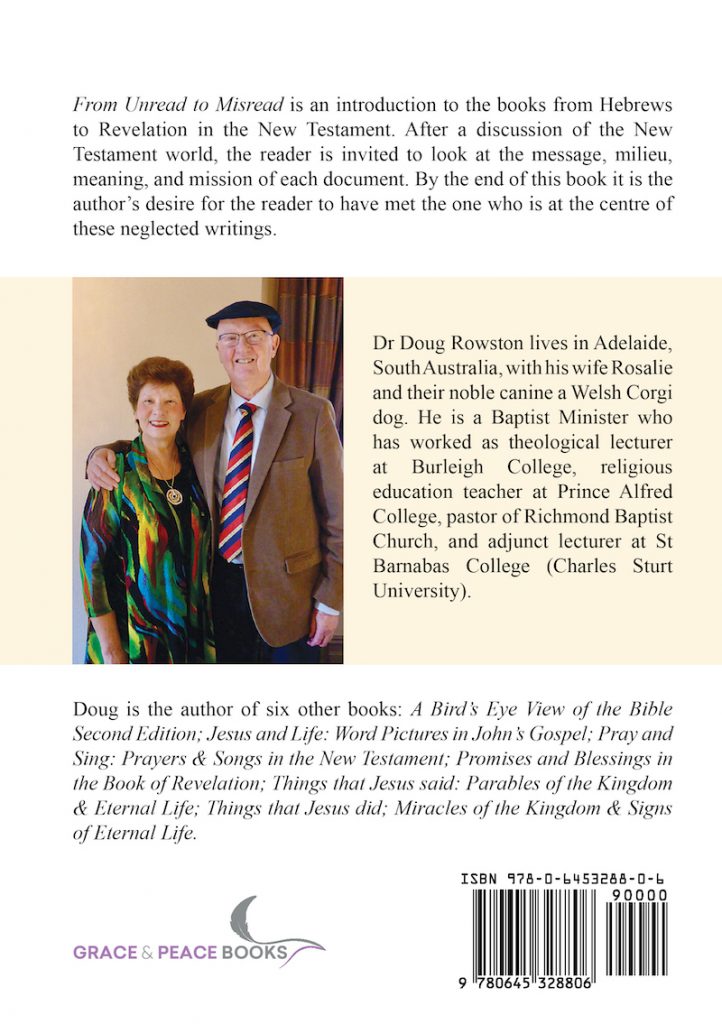From Unread to Misread Hebrews to Revelation Neglected New Testament Books
ISBN 978-0-6453288-0-6
From Unread to Misread is an introduction to the books from Hebrews to Revelation in the New Testament. After a discussion of the New Testament world, the reader is invited to look at the message, milieu, meaning, and mission of each document. By the end of this book it is the author’s desire for the reader to have met the one who is at the centre of these neglected writings.
The first chapter is about the world of the New Testament. To read these neglected books requires an understanding of the history of the times. Then the succeeding chapters will make sense of the time and place of the writing of each document.
A similar pattern is followed as documents are examined:
1 Message – What is the content of the document/s?
2 Milieu & Meaning – What are the time and place of writing, the purpose and reason for writing?
3 Mission – What is the significance then and now in the witness of the church?
Dr Gillies Ambler has provided an insightful review. ”Context provides a major highway for us to comprehend meaning and action in life. Throughout this book Doug Rowston’s ‘theological drone’ hovers over each New Testament letter from Hebrews to Revelation, succinctly setting early church communities within the context of the Roman Empire …This book will be of benefit to anyone who seeks an overview of these significant biblical letters for personal reflection, relevant preaching or developing into Bible studies. Each chapter begins with an excellent summary of the letter’s context and ends with an extensive bibliography. After explaining each letter’s message, milieu, meaning and mission, each chapter ends in prayer … Doug Rowston, through each chapter, seeks to challenge readers to embrace new possibilities for understanding and developing a relationship with Jesus leading to deeper life-giving and love-centred action, in our complex modern societies with kaleidoscopic conflicting views. If you are up for this challenge, then I recommend this book.”



